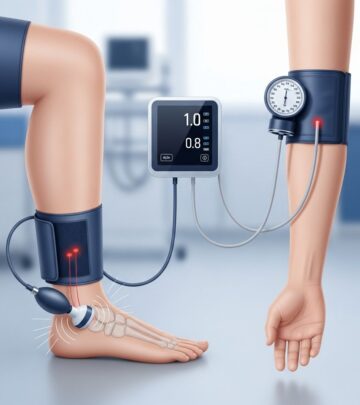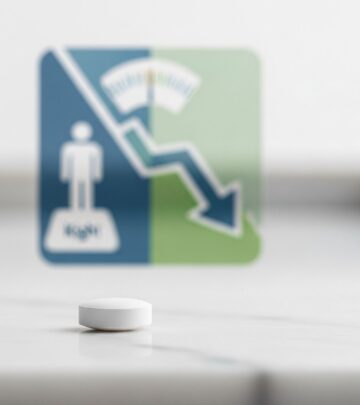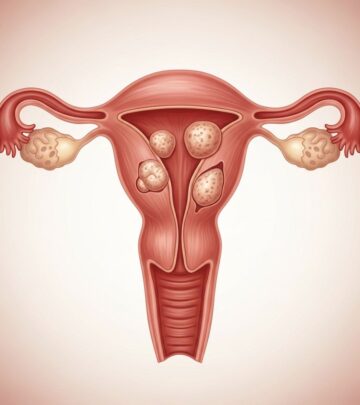Azelastine Nasal Spray: Uses, Dosage, Side Effects, and More
Detailed guide to Azelastine nasal spray: indications, directions, precautions, and what to know before use.

Azelastine nasal spray is an antihistamine medication prescribed to manage the symptoms associated with seasonal and perennial (year-round) allergic rhinitis, as well as other upper respiratory nasal allergies and certain non-allergic nasal symptoms. This guide covers essential information including indications, directions for use, possible side effects, precautions, and frequently asked questions.
Brand Names
- Astelin®
- Astelin Ready-Spray®
- Astepro®
Description
Azelastine nasal spray is designed to provide relief from nasal allergy symptoms such as:
- Stuffy or runny nose
- Nasal itching
- Sneezing
It is effective for both short-term (seasonal) and long-term (perennial) allergic rhinitis (hay fever), vasomotor rhinitis, and other upper respiratory nasal allergies. Azelastine acts by blocking histamine, a substance in the body that triggers allergic symptoms, thereby reducing inflammation, itching, sneezing, and mucus production.
How Azelastine Works
Azelastine is classified as a second-generation antihistamine. It selectively targets H1 receptors, preventing histamine—the major cause of allergy symptoms—from binding and exerting its effects in the nasal passages.
- Rapid onset: Begins to work within 15-30 minutes after administration.
- Multiple strengths available: 0.1% and 0.15% formulations, some available over the counter as Astepro Allergy in the U.S.
- Intended for nasal use only. Avoid contact with eyes or mouth.
Indications and Uses
| Condition | Use of Azelastine Nasal Spray |
|---|---|
| Seasonal Allergic Rhinitis | Relief of sneezing, runny nose, and itchy nose during pollen seasons. |
| Perennial Allergic Rhinitis | Year-round control of nasal allergies regardless of season. |
| Vasomotor Rhinitis | Management of chronic nasal symptoms not triggered by allergies. |
| Nonallergic Rhinitis (off-label) | Relief of nasal congestion and runny nose unrelated to allergies in some cases. |
Dosage Forms and Strengths
Azelastine nasal spray is available in multiple forms and strengths depending on age, condition, and brand:
- Astelin®: 0.1% concentration (137 mcg/spray)
- Astepro®: 0.1% or 0.15% concentration (137 mcg or 205.5 mcg/spray)
- Astepro Allergy® (Over-the-Counter): 0.15% (205.5 mcg/spray)
Typical Dosing Guidelines
Dosing varies according to the patient’s age, nasal allergy type, and the specific product. Always follow your healthcare provider’s instructions. Below are general dosing recommendations:
- Adults & children 12 years and older:
- Astelin®: 1 or 2 sprays in each nostril twice daily, or 2 sprays in each nostril once daily.
- Astepro®/Astepro Allergy®: 2 sprays in each nostril once daily or 1–2 sprays in each nostril twice daily; do not exceed 4 sprays per nostril per day (24 hours).
- Children 6–11 years:
- Astelin®/Astepro®: 1 spray in each nostril twice daily.
- Children 2–5 years:
- Astelin®: 1 spray in each nostril twice daily (137 mcg per spray).
- Children younger than 2 years (Astelin®/Astepro®)/younger than 6 years (Astepro Allergy®):
- Use and dose determined by your doctor; not typically recommended.
- Children 6 months to 2 years (Astepro® for perennial allergies):
- 1 spray in each nostril twice daily. Dose strictly under professional supervision.
Missed Dose
If a dose is missed, administer it as soon as remembered. If it’s almost time for the next dose, skip the missed dose—never double up to make up for a missed dose.
How to Use Azelastine Nasal Spray
Proper technique is important for effectiveness and to minimize side effects:
- Blow your nose gently to clear the nostrils.
- Shake the bottle well before each use.
- Prime the spray (for first use or when not used for several days):
- 0.1% spray: Prime by spraying 4 times into the air until a fine mist appears.
- 0.15% spray: Prime with 6 sprays into the air until a fine mist appears.
- If unused for 3 or more days, reprime with 2 sprays or until a fine mist is seen.
- Tilt head slightly forward and insert tip into one nostril.
- Close the other nostril with your finger.
- Press the pump firmly to deliver the medicine while slowly breathing in through the nose.
- Repeat in the other nostril as directed.
- Wipe the tip and replace the cap after use.
Important: Avoid spraying into the eyes or mouth. Wash hands after use.
Precautions and Warnings
- Only for nasal use: Do not ingest or spray into the eyes.
- Consult your healthcare provider before use if pregnant, breastfeeding, or if you have existing medical conditions.
- Monitor for unusual side effects: Seek medical help if you experience signs of allergic reaction, severe nasal irritation, or changes in taste or smell.
- Alcohol and CNS depressants: These may enhance sedative effects (drowsiness, fatigue).
- Children: Use only as recommended by a pediatrician, with dosing modified according to age and weight.
- Driving and hazardous tasks: Azelastine may cause drowsiness or reduced alertness in some individuals. Avoid activities requiring mental alertness until you know how this medicine affects you.
Possible Side Effects
Many people use azelastine nasal spray without significant adverse effects. Some might experience:
- Bitter taste in the mouth
- Headache
- Sleepiness or drowsiness
- Nasal discomfort or irritation
- Dry mouth, sore throat
- Epistaxis (nosebleed)
- Fatigue
- Weight increase (rare)
Serious side effects are rare but may include severe allergic reactions (rash, itching, swelling, breathing trouble). If these occur, stop usage and seek immediate medical attention.
When to Contact Your Doctor
- If you develop persistent nosebleeds or nasal ulcers
- If experiencing severe drowsiness, confusion, or difficulty breathing
- If you notice changes in mood or unusual mental symptoms
Storage and Disposal
- Keep out of reach of children and pets.
- Store at room temperature, away from heat, moisture, and direct sunlight.
- Do not freeze.
- Keep the bottle upright and the pump tightly closed when not in use.
- Do not keep outdated or no longer needed medicine.
- Consult your pharmacist or healthcare provider on how to properly dispose of unused or expired medication.
Frequently Asked Questions (FAQs)
What conditions does azelastine nasal spray treat?
Azelastine is used for relieving symptoms of allergic rhinitis (both seasonal and perennial), vasomotor rhinitis, and sometimes nonallergic rhinitis. It addresses sneezing, runny or stuffy nose, nasal itching, and postnasal drip.
How quickly does azelastine nasal spray work?
It usually takes effect within 15–30 minutes after use, providing symptom relief faster than most steroid nasal sprays.
Can I use azelastine with other allergy medications?
In some cases, your healthcare provider may recommend combining azelastine with other treatments such as corticosteroid nasal sprays for persistent symptoms. Always use as advised by your provider and inform them about all your medications to avoid drug interactions.
Is it safe to use azelastine nasal spray daily for a long time?
Azelastine can be used long-term under medical guidance for year-round allergies; however, regular reviews are advised to assess continued need and ongoing effectiveness.
Does azelastine nasal spray have sedative effects?
Some users experience drowsiness or fatigue. If you feel unusually tired or experience reduced alertness, avoid driving or using machinery.
What should I do if I accidentally spray the medicine into my eyes or mouth?
Rinse the affected area with water and contact your healthcare provider if irritation persists.
Can using azelastine nasal spray lower my risk of infections?
Recent studies suggest that azelastine may help reduce the risk of some respiratory infections including COVID-19, but it is not approved or intended as an antiviral medicine.
Tips for Best Results
- Use azelastine nasal spray at regular times each day for continual symptom control.
- Avoid missing doses for consistent relief.
- Prime the spray before the first use and after periods of non-use.
- Do not use more than the recommended dose per 24-hour period.
- Contact your healthcare provider if you have questions about your dosing schedule or if symptoms worsen.
When Not to Use This Medicine
- Known allergy or hypersensitivity to azelastine or any component of the formulation.
- Children younger than the recommended minimum age for the specific brand/formulation (see dosing above).
Interactions and Special Considerations
- Azelastine may interact with alcohol and sedatives, increasing the risk of drowsiness.
- If you are pregnant, planning to become pregnant, or breastfeeding, discuss azelastine use with your doctor.
- Let your healthcare provider know about all current medicines, including other nasal sprays, oral antihistamines, or corticosteroids.
Summary Table: Azelastine Nasal Spray At-a-Glance
| Feature | Description |
|---|---|
| Class | Antihistamine (nasal spray) |
| Common Indications | Seasonal & year-round allergic rhinitis |
| Age Approvals | 2 years and older (brand/formulation-dependent) |
| Onset of Action | Within 15–30 minutes |
| Usual Frequency | Once or twice daily, per doctor instructions |
| Main Side Effects | Bitter taste, nasal discomfort, drowsiness |
| Prescription Status | Rx for most forms; OTC available (Astepro Allergy 0.15%) |
Additional Information
- Azelastine nasal spray is only effective for nasal symptoms and does not treat eye or skin allergies; for allergic conjunctivitis, azelastine ophthalmic solution may be prescribed.
- Do not share your nasal spray with others to avoid spreading infection.
- If you experience prolonged symptoms or recurrent nosebleeds, re-evaluate with your healthcare provider.
References
- GoodRx. Azelastine nasal spray: Uses, Side Effects, Alternatives & More.
- Live Now Fox. Study finds common nasal spray may lower risk of COVID-19 infection.
- Mayo Clinic. Azelastine (nasal route) – Side effects & dosage.
- Mayo Clinic. Azelastine and fluticasone (nasal route) – Side effects & dosage.
- Mayo Clinic. Azelastine (ophthalmic route) – Side effects & dosage.
- Mayo Clinic. Nonallergic rhinitis – Diagnosis & treatment.
- Mayo Clinic. Hay fever – Diagnosis and treatment.
- Cleveland Clinic. Azelastine Nasal Spray.
Read full bio of medha deb












